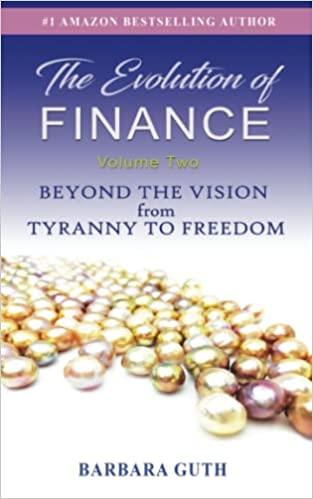Question
Assume that you recently graduated and landed a job as a financial planner with Cicero Services, an investment advisory company. Your first client recently inherited
Assume that you recently graduated and landed a job as a financial planner with Cicero Services, an investment advisory company. Your first client recently inherited some assets and has asked you to evaluate them. The client presently owns a bond portfolio with $1 million invested in zero coupon Treasury bonds that mature in 10 years.40 The client also has $2 million invested in the stock of Blandy, Inc., a company that produces meat-and- potatoes frozen dinners. Blandys slogan is Solid food for shaky times. Unfortunately, Congress and the President are engaged in an acrimonious dispute over the budget and the debt ceiling. The outcome of the dispute, which will not be resolved until the end of the year, will have a big impact on interest rates one year from now. Your first task is to determine the risk of the clients bond portfolio. After consulting with the economists at your firm, you have specified five possible scenarios for the resolution of the dispute at the end of the year. For each scenario, you have estimated the probability of the scenario occurring and the impact on interest rates and bond prices if the scenario occurs. Given this information, you have calculated the rate of return on 10-year zero coupon for each scenario. The probabilities and returns are shown below: Scenario Probability of Scenario Return on a 10-Year Zero Coupon Treasury Bond During the Next Year Worst Case 0.10 ?14% Poor Case 0.20 ?4% Most Likely 0.40 6% Good Case 0.20 16% Best Case 0.10 26% 1.00 You have also gathered historical returns for the past 10 years for Blandy, Gourmange Corporation (a producer of gourmet specialty foods), and the stock market. Historical Stock Returns Year Market Blandy Gourmange 1 30% 26% 47% 2 7 15 ?54 3 18 ?14 15 4 ?22 ?15 7 5 ?14 2 ?28 6 10 ?18 40 7 26 42 17 8 ?10 30 ?23 9 ?3 ?32 ?4 10 38 28 75 Average return: 8.0% ? 9.2% Standard deviation: 20.1% ? 38.6% Correlation with the market: 1.00 ? 0.678 Beta: 1.00 ? 1.30 The risk-free rate is 4% and the market risk premium is 5%. a. What are investment returns? What is the return on an investment that costs $1,000 and is sold after 1 year for $1,060? b. Graph the probability distribution for the bond returns based on the 5 scenarios. What might the graph of the probability distribution look like if there were an infinite number of scenarios (i.e., if it were a continuous distribution and not a discrete distribution)? c. Use the scenario data to calculate the expected rate of return for the 10-year zero coupon Treasury bonds during the next year. d. What is stand-alone risk? Use the scenario data to calculate the standard deviation of the bonds return for the next year. e. Your client has decided that the risk of the bond portfolio is acceptable and wishes to leave it as it is. Now your client has asked you to use historical returns to estimate the standard deviation of Blandys stock returns. (Note: Many analysts use 4 to 5 years of monthly returns to estimate risk and many use 52 weeks of weekly returns; some even use a year or less of daily returns. For the sake of simplicity, use Blandys 10 annual returns.) f. Your client is shocked at how much risk Blandy stock has and would like to reduce the level of risk. You suggest that the client sell 25% of the Blandy stock and create a portfolio with 75% Blandy stock and 25% in the high-risk Gourmange stock. How do you suppose the client will react to replacing some of the Blandy stock with high- risk stock? Show the client what the proposed portfolio return would have been in each of year of the sample. Then calculate the s average return and standard deviation using the portfolios annual returns. How does the risk of this two-stock portfolio compare with the risk of the individual stocks if they were held in isolation? g. Explain correlation to your client. Calculate the estimated correlation between Blandy and Gourmange. Does this explain why the portfolio standard deviation was less than Blandys standard deviation? h. Suppose an investor starts with a portfolio consisting of one randomly selected stock. As more and more randomly selected stocks are added to the portfolio, what happens to the portfolios risk?
Step by Step Solution
There are 3 Steps involved in it
Step: 1

Get Instant Access to Expert-Tailored Solutions
See step-by-step solutions with expert insights and AI powered tools for academic success
Step: 2

Step: 3

Ace Your Homework with AI
Get the answers you need in no time with our AI-driven, step-by-step assistance
Get Started


